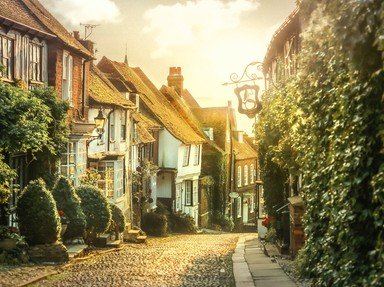Quiz Answer Key and Fun Facts
1. Three of these are former stars of music hall. Which one, then, is an English village?
2. Can you sort out the English village from this menagerie of creatures?
3. Do you know the English village, or will you be hit for six by this glossary of cricket terms?
4. Stop monkeying around and tell me the English village from this list of primates.
5. For three of these a doctor may be required. For the other one, call a gardener instead, but which one is the English village?
6. En garde. Which of this list is an English village and did not represent Great Britain as an Olympic fencer?
7. Heigh-ho, it's off to the village we go. Which is a village in England and not one of the rejected dwarf names for Disney's "Snow White and the Seven Dwarfs" (1937)?
8. No time for woolly thinking. Can you pick out the English village from this list of sheep diseases?
9. Get your textbooks out. Three of these have held the position of Regius Professor of History at either Oxford or Cambridge universities while one is an English town. Which is the imposter?
10. Shall I compare thee to a Shakespearean character? Yes I will actually. Which of this list is a place in England and not one of the bard's inventions?
Source: Author
480154st
This quiz was reviewed by FunTrivia editor
agony before going online.
Any errors found in FunTrivia content are routinely corrected through our feedback system.

